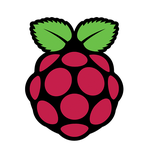The Raspberry Pi 500: A Compact Powerhouse in a Keyboard Shell
December 21, 2024, 5:41 am

Location: United Kingdom, England, South Hams
Employees: 51-200
Founded date: 2008
Total raised: $103.17M
In the world of computing, innovation often comes in unexpected forms. Enter the Raspberry Pi 500, a compact computer ingeniously integrated into a keyboard. This device is not just a novelty; it’s a versatile tool for developers and everyday users alike. With its sleek design and robust capabilities, the Raspberry Pi 500 is poised to redefine how we think about personal computing.
The Raspberry Pi Foundation has a knack for creating devices that blend functionality with affordability. The Raspberry Pi 500 is no exception. It’s a logical evolution of the keyboard PC concept that gained traction during the pandemic. The original model, the Raspberry Pi 400, laid the groundwork. Now, the 500 takes it a step further, boasting a more powerful processor and enhanced graphics.
Imagine a computer that fits snugly on your desk, yet packs a punch. The Raspberry Pi 500 does just that. Its minimalist design is appealing, especially with its all-white casing. Gone is the red-and-white color scheme of its predecessor, making way for a clean, modern aesthetic. This device is a breath of fresh air for those who appreciate simplicity.
Connectivity is key in today’s digital landscape. The Raspberry Pi 500 doesn’t disappoint. It features a variety of ports conveniently located on the back. Users will find two USB 3.0 ports for high-speed devices, a USB 2.0 port for peripherals, a microSD card slot, and two micro HDMI ports capable of 4K video output. Additionally, it includes a GPIO port for those who love to tinker with hardware. This is a device that invites creativity.
The keyboard itself is designed for comfort. With soft membrane keys, typing becomes a breeze. The power button is cleverly placed in the upper right corner, requiring a simple press-and-hold to turn off the device. This thoughtful design element ensures users won’t accidentally shut down their work mid-project.
Inside the Raspberry Pi 500, the specs tell a compelling story. It houses a quad-core Arm Cortex-A76 processor running at 2.4 GHz, a significant upgrade from the Cortex-A72 in the 400 model. The graphics capabilities have also seen a boost, thanks to the VideoCore VII architecture. With 8 GB of LPDDR4X RAM, multitasking becomes seamless. Users can run multiple applications without a hitch.
Cooling is often an afterthought in compact devices, but not here. The Raspberry Pi 500 employs an aluminum plate for heat dissipation, ensuring silent operation. Even under heavy loads, the processor remains cool, with temperatures peaking at just 51 °C. This is a remarkable feat for a device of its size. In comparison, many traditional desktops require bulky cooling systems and consume far more power.
While the Raspberry Pi 500 excels in many areas, it does have its limitations. The absence of a dedicated M.2 slot for storage expansion is a notable drawback. However, this decision likely stems from a desire to keep costs down and maintain a simple design. Additionally, the lack of support for cameras and touch displays may deter some users. Yet, for many, these are minor inconveniences overshadowed by the device’s strengths.
Pricing is another attractive feature. The Raspberry Pi 500 starts at just $90 for the base model, which includes a 32 GB microSD card preloaded with Raspberry Pi OS. For those seeking a complete package, the Desktop Kit at $120 offers everything needed to get started, including a power supply and HDMI cable. This affordability makes it accessible to a wide audience, from students to hobbyists.
The potential applications for the Raspberry Pi 500 are vast. In educational settings, it serves as an excellent tool for teaching programming and robotics. Its compact size makes it ideal for classrooms where space is at a premium. At home, it can transform into a media server, streaming content to your TV or acting as a hub for your smart devices.
In the office, the Raspberry Pi 500 shines as a productivity machine. It handles document editing, email, and web browsing with ease. Its small footprint means it won’t clutter your workspace, making it a practical choice for those who value organization.
The Raspberry Pi 500 is not just a computer; it’s a gateway to creativity and innovation. It encourages users to explore, experiment, and learn. For DIY enthusiasts, the GPIO port opens up a world of possibilities. While accessing it may require some effort due to the design, the rewards are worth it.
In conclusion, the Raspberry Pi 500 is a testament to the power of compact computing. It combines style, functionality, and affordability in a way that few devices can match. Whether you’re a developer, a student, or someone looking for a reliable home computer, the Raspberry Pi 500 is a compelling choice. It’s more than just a keyboard; it’s a portal to endless possibilities.
The Raspberry Pi Foundation has a knack for creating devices that blend functionality with affordability. The Raspberry Pi 500 is no exception. It’s a logical evolution of the keyboard PC concept that gained traction during the pandemic. The original model, the Raspberry Pi 400, laid the groundwork. Now, the 500 takes it a step further, boasting a more powerful processor and enhanced graphics.
Imagine a computer that fits snugly on your desk, yet packs a punch. The Raspberry Pi 500 does just that. Its minimalist design is appealing, especially with its all-white casing. Gone is the red-and-white color scheme of its predecessor, making way for a clean, modern aesthetic. This device is a breath of fresh air for those who appreciate simplicity.
Connectivity is key in today’s digital landscape. The Raspberry Pi 500 doesn’t disappoint. It features a variety of ports conveniently located on the back. Users will find two USB 3.0 ports for high-speed devices, a USB 2.0 port for peripherals, a microSD card slot, and two micro HDMI ports capable of 4K video output. Additionally, it includes a GPIO port for those who love to tinker with hardware. This is a device that invites creativity.
The keyboard itself is designed for comfort. With soft membrane keys, typing becomes a breeze. The power button is cleverly placed in the upper right corner, requiring a simple press-and-hold to turn off the device. This thoughtful design element ensures users won’t accidentally shut down their work mid-project.
Inside the Raspberry Pi 500, the specs tell a compelling story. It houses a quad-core Arm Cortex-A76 processor running at 2.4 GHz, a significant upgrade from the Cortex-A72 in the 400 model. The graphics capabilities have also seen a boost, thanks to the VideoCore VII architecture. With 8 GB of LPDDR4X RAM, multitasking becomes seamless. Users can run multiple applications without a hitch.
Cooling is often an afterthought in compact devices, but not here. The Raspberry Pi 500 employs an aluminum plate for heat dissipation, ensuring silent operation. Even under heavy loads, the processor remains cool, with temperatures peaking at just 51 °C. This is a remarkable feat for a device of its size. In comparison, many traditional desktops require bulky cooling systems and consume far more power.
While the Raspberry Pi 500 excels in many areas, it does have its limitations. The absence of a dedicated M.2 slot for storage expansion is a notable drawback. However, this decision likely stems from a desire to keep costs down and maintain a simple design. Additionally, the lack of support for cameras and touch displays may deter some users. Yet, for many, these are minor inconveniences overshadowed by the device’s strengths.
Pricing is another attractive feature. The Raspberry Pi 500 starts at just $90 for the base model, which includes a 32 GB microSD card preloaded with Raspberry Pi OS. For those seeking a complete package, the Desktop Kit at $120 offers everything needed to get started, including a power supply and HDMI cable. This affordability makes it accessible to a wide audience, from students to hobbyists.
The potential applications for the Raspberry Pi 500 are vast. In educational settings, it serves as an excellent tool for teaching programming and robotics. Its compact size makes it ideal for classrooms where space is at a premium. At home, it can transform into a media server, streaming content to your TV or acting as a hub for your smart devices.
In the office, the Raspberry Pi 500 shines as a productivity machine. It handles document editing, email, and web browsing with ease. Its small footprint means it won’t clutter your workspace, making it a practical choice for those who value organization.
The Raspberry Pi 500 is not just a computer; it’s a gateway to creativity and innovation. It encourages users to explore, experiment, and learn. For DIY enthusiasts, the GPIO port opens up a world of possibilities. While accessing it may require some effort due to the design, the rewards are worth it.
In conclusion, the Raspberry Pi 500 is a testament to the power of compact computing. It combines style, functionality, and affordability in a way that few devices can match. Whether you’re a developer, a student, or someone looking for a reliable home computer, the Raspberry Pi 500 is a compelling choice. It’s more than just a keyboard; it’s a portal to endless possibilities.
